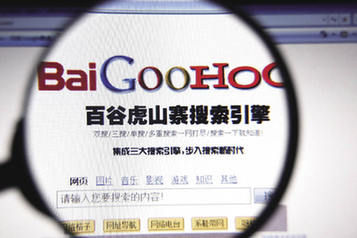|
The downside to shanzhai products is that they are illegal, something that still discourages many people from buying them. But then a shanzhai model with functions identical to those of an authorized manufacturer costs just a few hundred, rather than several thousand, RMB. Although most shanzhai models are found at the low end of the market, they nevertheless have huge impact on cheaper big-brand models. Mass replication of the Nokia top-line N-series, for example, has caused the company huge losses. Sales of the N-series dropped by 16.2 percent in the first quarter of 2008 from 21 million sets to just 17.6 million, according to the Nokia financial report for the second quarter of 2008. From a global standpoint, Nokia experienced a drop in sales only in the greater China area. But as all high-reputed internationally famous brands spawn shanzhai imitations, Nokia is by no means the only victim. Samsung and Motorola also have illicit shanzhai twins, identical in appearance and with the same functions as their originals. The quality of these clones, however, is questionable. This is often a source of exasperation to cheapskate purchasers when problems occur, especially as shanzhai sets carry no after-sales service.
The Shenzhen municipal government has tried to nip shanzhai set production in the bud by raiding workshops and destroying finished products. But it is uphill work because shanzhai producers in Shenzhen are big employers commanding a 200,000 or more workforce.
There are, broadly speaking, three types of shanzhai product: those smuggled into the country, those imitated to the finest detail, and those in an original shanzhai design rather than a copy because their manufacturer cannot afford the astronomical license fee. The latter deserves acknowledgement. Experts agree that the first two types of shanzhai should be eradicated, but that amnesty should be offered to the third for purposes of enlisting the services of their producers to promote the success of domestic manufacturers.
Governmental departments, however, were unmoved, and went to the other extreme of issuing ID numbers for every mobile set made by licensed manufactures, thereby administering a death blow to shanzhai sets, as they need this ID to connect to the network. It was a move highly contested by customers and experts alike on the grounds that it will lose domestic manufacturers ground to foreign competitors and create the "monopoly of Titans" earlier mentioned.
Cultural Implications
One historian so defines shanzhai: "Monopoly has always been resented by the lower social echelons, who have throughout Chinese history devised ways of circumventing the rules that allow monopolies to exist. Shanzhai in the literary sense means something on the fringes of the establishment, or domain of law and rules. Having come about through intuition and the need to survive, it has existed for centuries in the no-man's land between what is and is not legal. Shanzhai has been a recurring cultural and social phenomenon since long before the advent of electronic mobile products."
The truth of this assessment is widely apparent. One enterprising farmer, for instance, fashioned a model of the Bird's Nest out of bamboo slips, naming it the "shanzhai edition." And a young woman bearing a striking resemblance to movie star Zhang Ziyi was hired to model lingerie for a TV commercial. Shanzhai also offers an alternative to the Google, Baidu and Yahoo search engines in the form of "BaiGooHoo," which incorporates the best features of all three, making no attempt to present itself as anything other than a shanzhai service. While a remake of the popular TV serialization of Qing-dynasty author Cao Xueqin's classic novel, A Dream of Red Mansions, was still in the planning stages, an Internet enthusiast and his entire family staged two episodes of a shanzhai edition of the show on the Internet, in which the cast wore costumes made from bed sheets. The whole production cost just RMB 20 and was a resounding success. This family of thespians was recently reported to be working on a pastiche of classical highlights. Their innovative approach to home entertainment has won them high public commendation.
 |
|
BaiGooHoo, a shanzhai edition of a search engine combining three big-name searching engines. Chen Bo |
Shanzhai culture reflects a fusion of mentalities, said Zhang Yiwu, professor at Peking University and an established literary critic. Rather than paying mandatory homage to the prototype, shanzhai satirizes the whole brand concept from its precarious twilight existence on the fringes of convention which it openly and ingeniously flouts.
Han Jiangxue and Shi Mengqi are among the best-known shanzhai practitioners. Han came to fame through his pared-down replication of the popular CCTV program "Lecture Room"; Shi through producing his own Spring Festival party for broadcast on the Internet which represents a serious competitor to this year's CCTV show.
"Lecture Room," an all-time national favorite, has won countless TV industry awards. It consists of a group of respected scholars discussing and assessing Chinese history in plain language that makes academic topics accessible to the broad masses. Han Jiangxue's shanzhai edition, however, took a different approach by baldly stating hard historical facts without explanation or discussion of their implications. Nice try, many viewers said after watching it on the Internet, but we prefer the real thing. "Han's edition," as one viewer said, "is nothing more than a collection of obscure, random facts which, without explanation and background, mean nothing to the public."
But Han's fame is due not to his video, but to being repeatedly rejected by the CCTV.
|
